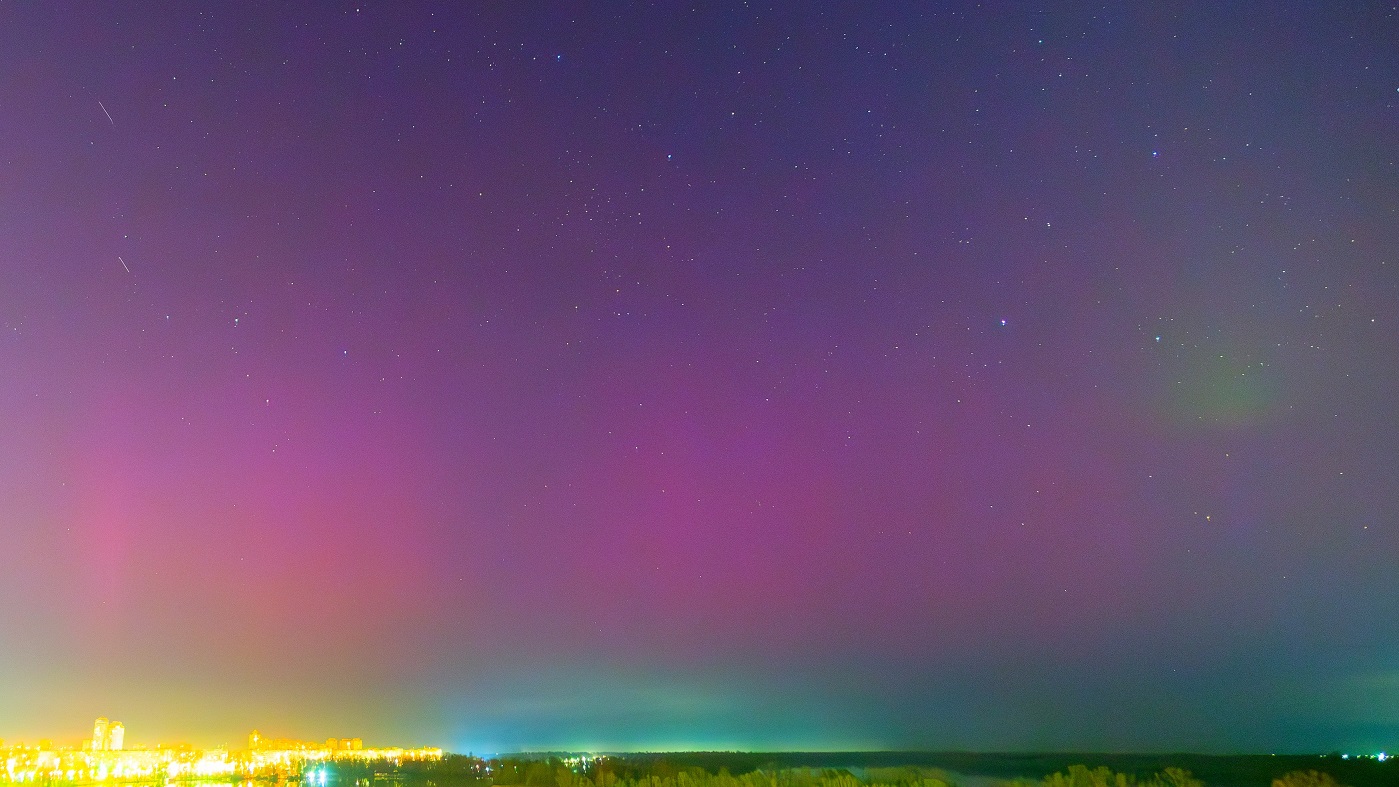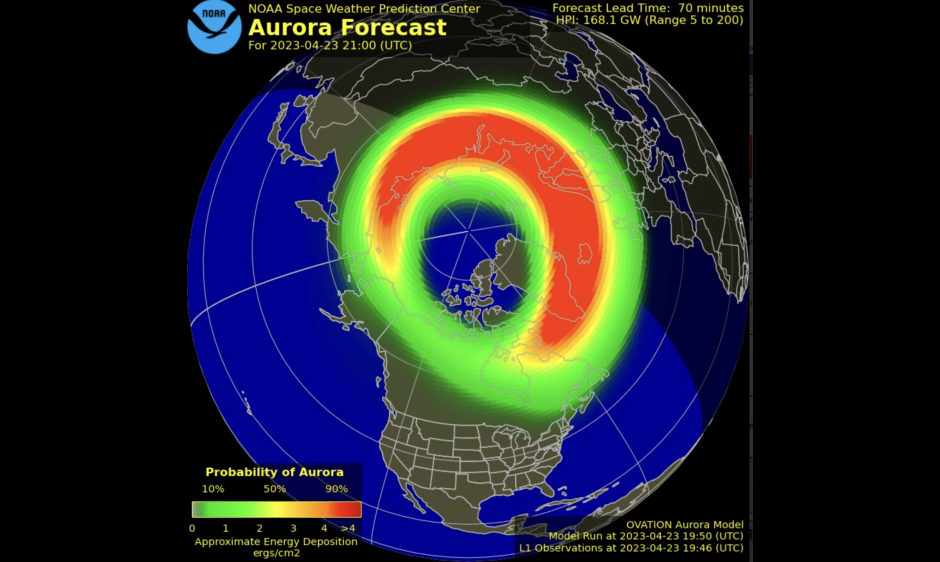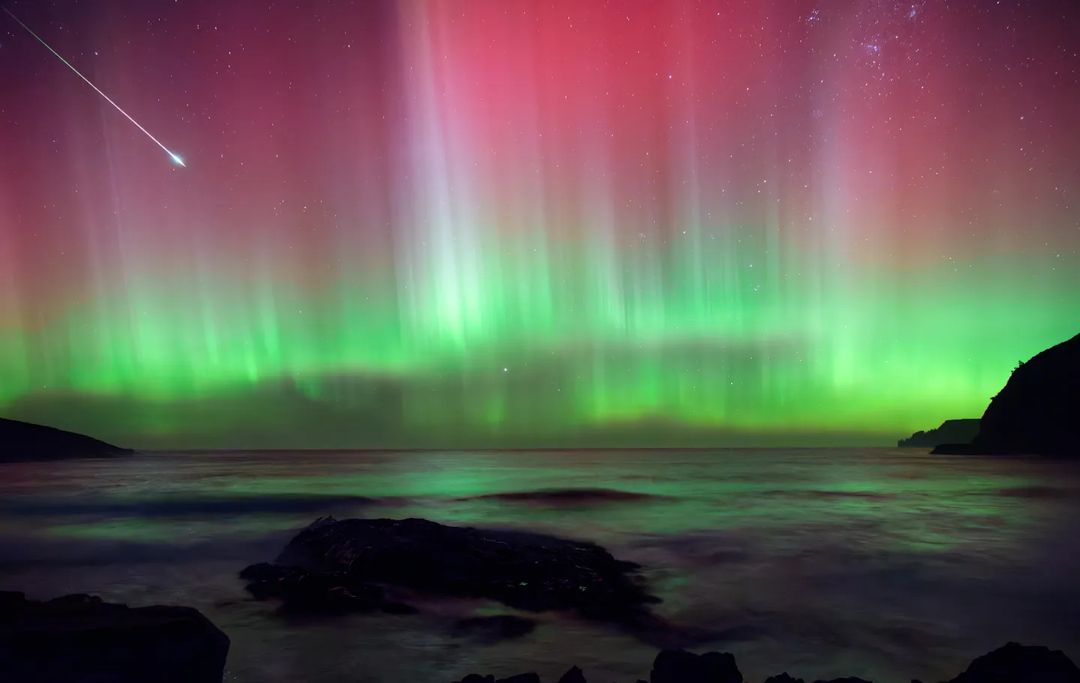After the full-scale invasion of the Russian invaders and the recent bolide over the Kyiv region, it is probably already difficult to surprise Ukrainians with something. But on the evening of April 23, an unusual crimson glow began to flare up in the northern part of the sky — the aurora borealis, which became an “echo” of a powerful solar flare. Even then, there were predictions that we would be able to see something like this again before the end of the year. A little more than six months passed, and the prediction came true: on the evening of November 5, another aurora was observed from almost the entire territory of Ukraine.

M-class solar flare occurred on April 21, 2023, in the NOAA 3282 group of spots and was accompanied by a significant coronal mass ejection. A powerful stream of charged particles (mainly protons) “went” from the Sun into outer space, on the way of which our Earth occurred. In fact, our luminary constantly throws out such particles, this phenomenon has even been called the “solar wind”. But they are successfully “intercepted” by the earth’s magnetic field at altitudes of about 400 km.
During solar flares, high-energy particles appear in the solar wind, capable of “getting closer” to us. According to the laws of electrodynamics, it is easiest for them to do this in the area of the earth’s magnetic poles, which do not coincide with geographical ones (and constantly change their position), but in our era they are not very far away from them. At altitudes of about 200 km, these particles begin to collide with atmospheric gas atoms. At the same time, energy is released in the form of electromagnetic radiation. We see it as the Aurora borealis.

The “Auroral Oval” is a section of the Northern Hemisphere of the Earth. The aurora borealis was observed over it on April 23. In fact, due to the glow occurring at altitudes up to several hundred kilometers, it is visible on a much larger area.
The flow of charged particles carries with it its own magnetic field interacting with the Earth’s field, and when it “meets” powerful coronal ejections of solar matter, phenomena known as geomagnetic storms occur when the Earth’s magnetosphere contracts, and particles (especially the most high-energy ones) are able to enter the atmosphere of our planet not only in northern latitudes, but also in temperate, and sometimes even in tropical. The event on April 23 was assigned an index of 8 on a 9-point scale, so it was one of the most powerful magnetic storms of the current 25th cycle of solar activity, which began in 2020. It was not surprising that auroras were observed during it in the north of Ukraine and even in Bavaria.

The “source” of the November 5 event was most likely an active region on the solar surface with the AR3474 index, where two strong flares were recently observed. It can be stated with sufficient confidence that in the near future we will witness many auroras, the visibility zone of which will cover even low latitudes. At least until the end of 2024, the activity of the Sun will grow, along with the number of flares and their power. However, astronomers have not yet learned how to predict their appearance (and, as a result, the appearance of auroras).
Follow us on Twitter to get the most interesting space news in time
https://twitter.com/ust_magazine


